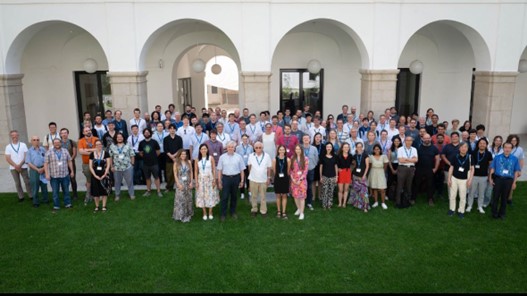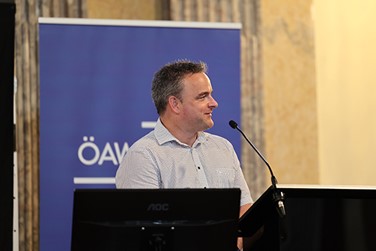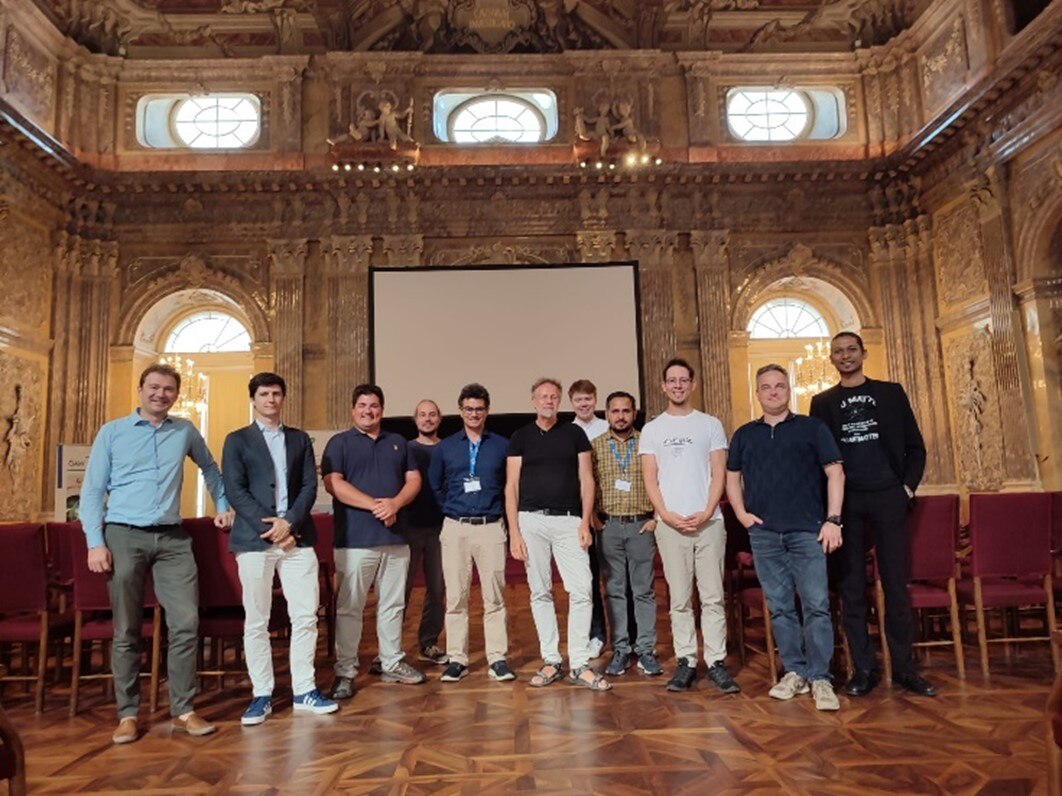University of Liverpool’s QUASAR Group features at EXA/LEAP2024

The international scientific community gathered from 26-30 August for the International Conference on Exotic Atoms and Related Topics (EXA) and the Low Energy Antiprotons (LEAP) 2024 conference at the Stefan Meyer Institute in Vienna. EXA/LEAP2024 served as a fantastic platform for experts to explore and discuss the latest advancements in exotic atoms and antimatter physics. Members of the QUASAR Group from the University of Liverpool, including Dr Benjamin Rienacker, Dr Bharat Singh Rawat, and Prof Carsten Welsch, presented their work on antimatter research. Dr Benjamin Rienacker presented studies on positron converter targets.
Dr Benjamin Rienacker presented studies on positron converter targets.
Dr Benjamin Rienacker presented studies on positron converter targets. Preliminary investigations demonstrated promising results, indicating up to 16% positron-to-positronium (Ps) conversion in transmission configuration for membranes with a thickness of only 3.5 µm. By varying membrane thickness, nanochannel size, and positron implantation energy, the study aims to define the optimal conditions for maximizing Ps yield and controlling its velocity distribution. Furthermore, the research assesses the absorption properties of UV laser light by the transmission converters, offering insights into potential strategies for Ps manipulation and cooling. These efforts hold the potential for improving antihydrogen beam formation at AEgIS by enabling collinear installation without downstream obstacles. This integration could also lead to an exponentially increasing formation cross-section due to the co-propagation of antiprotons and Rydberg-positronium atoms. Additionally, when the membrane is attached to a flat silicon surface, it allows for the construction of a buried cavity, enabling studies on laser-cooled positronium through the membrane, setting the stage for future research on Bose-Einstein condensates with Ps.

Dr Bharat Singh Rawat discussing the research and studies during the poster session.
Dr Bharat Singh Rawat presented simulation studies on the mixed plasma confinement of antiprotons in the 1T trap of the AEgIS experiment. The research examines the dynamics of antiprotons by varying the outer electrode potentials while maintaining constant potentials at the inner electrodes of the electrostatic trap, utilizing a Particle-In-Cell (PIC) solver in CST Studio. The studies extended to the temporal evolution of a mixed plasma generated by introducing electrons into the trap along with antiprotons and observing the effects of their initial properties, such as initial density, temperature, and number of macro-particles. Additionally, an overview of results obtained for the temperature and profile evolution of electrons and antiprotons using a rotating wall electrode was provided. It also included the plans to develop a full digital twin of the AEgIS experiment over the next two years, offering valuable insights into the parameters required for optimized experiments.

Prof Carsten Welsch chaired a session on Wednesday afternoon.
Prof Carsten Welsch showcased research and technology innovation highlights from the AVA (Accelerators Validating Antimatter) project. His presentation highlighted new methods in researcher training and science communication developed by the network, which have been recognized as best practices in Europe through formal evaluations. Additionally, he chaired a scientific session on Wednesday afternoon.

The members of the AEgIS collaboration present at the EXA/LEAP 2024 conference. ((L-R) G. Kornakov ,J.Zielinski, R.Caravita, M.Germann, A.Camper, M.Doser, F.Gustafsson, S.Kumar, B.Rienacker, C.Welsch and B.Rawat )
The conference covered a range of topics, including hadronic physics with antiprotons, physics with antihydrogen, exotic hadronic and leptonic atoms, and antimatter in the universe. Several members of the AEgIS collaboration also attended the conference to present the status and future of the experiment.